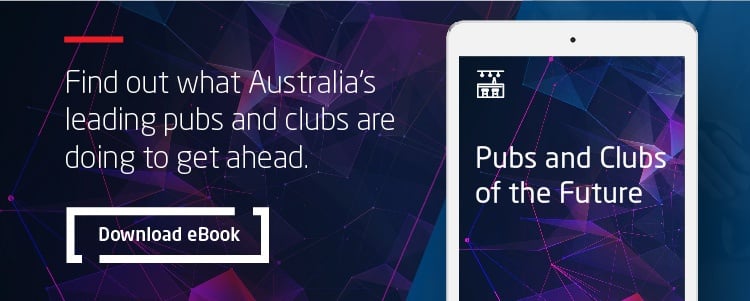How Australia’s Top Clubs Stay At The Forefront Of The Hospitality Industry
For decades, clubs have been at the heart of the Australian hospitality industry and venues, providing a place for people to socialise, relax and have a bit of fun. But with Australians becoming more health conscious, and with more competition than ever for people’s leisure time (read: Netflix), traditional revenue streams are taking a hit and clubs have had to find other ways to remain relevant to their members and keep attendance high.
And they’re doing so with outstanding success.
Here are 4 ways Australia’s top clubs are delivering value to members and staying at the forefront of the Australian hospitality industry.
UPSCALED DINING EXPERIENCE
These days, it takes more than a $12 steak to entice diners to venues. That’s why many clubs are revamping their menus, providing an upscaled dining experience on par with some of Australia’s most beloved and iconic restaurants. In fact, they have done so with such success that at the 2016 Chef’s Table Awards, the top three gongs were all taken out by regional clubs, with Wests Mayfield snatching the Gold Award.
“As the saying goes, ‘The proof is in the pudding’, and the club industry is fortunate to have so many gifted chefs who produce thousands of quality meals to wow any taste-bud,” said ClubNSW’s CEO Anthony Ball.
“The skills, thrills, tricks and trends we’ve seen on show amongst our finalists show why clubs are offering food and dining choices to members and patrons that even some of Sydney’s best restaurants would envy.”
Clubs have also had to stay at the forefront of foodie trends. According to the Eating Out in Australia 2017 report, venues reported an increasing interest in healthier offerings, showing people are becoming more health conscious. People are also becoming more aware of how their choices affect climate change, with a growing tendency toward vegetarianism and veganism, and clubs are responding in kind with more diverse vegetarian options.
“People want to understand what they’re eating, how it was grown, and the origins of the food,” says Richard Errington of West HQ. “I think they’ll become much more discerning of the food chain and paddock-to-plate situation. We need to be able to give them that.”
CURATED BEVERAGE MENUS
With Australians tending to drink less, clubs and many other businesses in the hospitality industry have had to find other ways to maintain revenue. This has resulted in beverage menus being kicked up a notch, with more premium wines, craft beers and bespoke cocktails being offered.
This is precisely what the Epping Club did. “We’ve tapped into the public’s growing interest in different wine varietals, encouraging guests to enjoy food and beverage matches curated by our sommelier. We also host regular winemaker degustations,” wrote Epping Club’s CEO Peter Saez in an article for Hospitality Magazine. “Volume may be declining but the margins on more premium wine varietals and craft beer means we’re able to maintain our profitability targets and offer our guests the choices and variety that they’re calling for. It’s a win-win.”
The recently opened Pacific Club Bondi Beach has also placed a lot of emphasis on their drink offerings, with sommelier Chris Morrison devising their wine program, and Michael Chiem of PS40 designing the cocktail list, which draws on Australian native ingredients.
“Bondi is free-flowing, light, colourful, playful and also well versed in exploring different tastes; our cocktail list captures the effervescent spirit of Bondi,” says Chiem.
DIVERSIFIED SERVICES
Gone are the days when the club was somewhere you’d go just to have a beer and a punt. Today’s top clubs and hospitality industry establishments are becoming one-stop shops, providing leisure, entertainment and services well beyond traditional clubs.
The recently launched West HQ in Western Sydney is a prime example. From their humble beginnings as the Rooty Hill RSL, they now host a multitude of businesses, including a hotel, a gymnastics and aquatic centre, and a dining precinct that includes notable Sydney institutions like China Doll and Manfredi. And they will soon be launching Sydney Coliseum, a world-class theatre with acts like Dame Edna, Tina Arena and Keith Urban already scheduled to perform.
“We believe a destination with a number of activities is important,” says Errington. “People need to bring their kids to gymnastics; they want to meet their friends for dinner; they want to take in a show – we’re providing a number of reasons for people to visit. If you provide people with an experience, they will come.”
The Harbord Diggers Club overlooking Freshwater Beach in Sydney’s northern beaches has taken a similar tact, catering to their demographic with new facilities that include a seniors’ living village, a child care centre, a fitness and aquatic centre and a youth centre.
MORE SEAMLESS CUSTOMER EXPERIENCE
Clubs are already heavily reliant on technology to help streamline their members’ experiences, such as allowing electronic sign-ins and providing innovative payment solutions such as cashless facilities and cash redemption terminals for gaming rooms. But as clubs diversify their services, they are teaming up with tech partners to provide an even more seamless experience across their various businesses.
This type of tech not only benefits members, but also helps the club improve, as the data gathered can be used to glean when the peak periods are, what events and promotions members are responding to most strongly and so on, so they can continue to cater to their constituency better.
“We’re spending about $140 million on tech, and we’ve invested in Cisco, NEC and Ticketek, who are now our tech partners. We’re devising seamless booking systems, facial recognition, digital payments. For us, it is more about understanding our customers, so we can retain relevance,” says Errington.
And clubs aren’t just resting on their laurels. You can, for example, expect to see apps that allow diners to order and pay for their meals from their phones in the near future. ClubsNSW has also launched an accelerator program called Clubs THRIVE, which will help bring ideas around themes from member engagement to smarter operations, brought by ClubsNSW employees and start-ups, to life.
“We’re already looking at things like digital literacy for over-65s and eSports, but we know there are plenty of other innovative ideas out there. We’re particularly keen to hear how technology can lead our clubs into a stronger future,” said Ball.
As you can see, clubs are bucking the perception of being “old-fashioned” in the hospitality industry. Today’s high-performing clubs are creating highly curated and relevant hospitality experiences and services for their members, keeping them coming back for more.
Want to learn more about how Australia’s top clubs stay ahead of trends? Our free ebook Pubs and Clubs of the Future gives real-life examples of how today’s best-performing clubs stay popular and profitable. Download it now.




